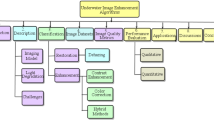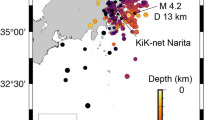Abstract
This paper proposes a heuristic singular spectrum analysis (SSA) approach to extract signals from suspended sediment concentration (SSC) time series contaminated by multiplicative noise, in which multiplicative noise is converted to approximate additive noise by multiplying with the signal estimate of the time series. Therefore both the signal and noise components need to be recursively estimated. Since the converted additive noise is heterogeneous, a weight factor is introduced according to the variance of additive noise. The proposed heuristic SSA approach is employed to process the SSC series in San Francisco Bay compared to the traditional SSA and homomorphic log-transformation SSA approach. By using our heuristic SSA approach, the first 10 principal components derived can capture 96.49% of the total variance with the fitting error of 6.17 mg/L, better than those derived by traditional SSA approach and homomorphic log-transformation SSA approach that catch 88.97% and 87.35% of the total variance with the fitting errors of 14.47 mg/L and 15.03 mg/L, respectively. Therefore, our heuristic SSA approach can extract more signals than traditional SSA and homomorphic log-transformation SSA approach. Furthermore, the results from the simulation cases show that all the mean root mean squared errors and mean absolute errors derived by our heuristic SSA are smaller than the traditional and homomorphic log-transformation SSA, which indicate that the extracted signals by heuristic SSA approach are much closer to the real signals than those by the other two approaches. Therefore it can be conclude that our heuristic SSA approach performs better in extracting signals from SSC time series contaminated with multiplicative noise.









Similar content being viewed by others
References
Adarsh S, Reddy MJ (2015) Multiscale analysis of suspended sediment concentration data from natural channels using the Hilbert–Huang transform. Aquat Procedia 4:780–788
Adarsh S, Reddy MJ (2016) Multiscale characterization of streamflow and suspended sediment concentration data using Hilbert–Huang transform and time dependent intrinsic correlation analysis. Model Earth Syst Environ 2(4):199. https://doi.org/10.1007/s40808-016-0254-z
Adelmann H (1998) Butterworth equations for homomorphic filtering of images. Comput Biol Med 28(2):169–181
Ambrosino F, Thinová L, Briestenský M et al (2019) Anomalies identification of Earth’s rotation rate time series (2012–2017) for possible correlation with strong earthquakes occurrence. Geod Geodyn. https://doi.org/10.1016/j.geog.2019.06.002
Aubert G, Aujol J (2008) A variational approach to removing multiplicative noise. SIAM J Appl Math 68(4):925–946
Barrios-Muriel J, Romero F, Alonso FJ et al (2016) A simple SSA-based de-noising technique to remove ECG interference in EMG signals. Biomed Signal Proc Cont 30:117–126
Broomhead D, King G (1986) Extracting qualitative dynamics from experimental data. Phys D 20(2–3):217–236
Buchanan PA, Schoellhamer DH (1998) Summary of suspended-solids concentration data, San Francisco Bay, california, water year 1996. Cent Integr Data Anal Wis Sci Cent 94(5):33–35
Buchanan PA, Ruhl CA (2000) Summary of suspended-solids concentration data, San Francisco Bay, California, water year 1998, open file report 99-189, U.S. Geological Survey, 41 pp
Buchanan PA, Schoellhamer DH (1999) Summary of suspended solids concentration data, San Francisco Bay, California, water year 1997, open file report 00-88, U.S. Geological Survey, 52 pp. https://doi.org/10.3133/ofr99189
Cheng RT, Gartner JW (1985) Harmonic analysis of tides and tidal currents in south San Francisco Bay, california. Estuar Coast Shelf Sci 21(1):57–74
Clifford NJ, Richards KS, Brown RA, Lane SN (1995) Scales of variation of suspended sediment concentration and turbidity in a glacial meltwater stream. Geogr Ann 77(1/2):45–65
Cloern JE (1987) Turbidity as a control on phytoplankton biomass and productivity in estuaries. Cont Shelf Res 7(11):1367–1381
Cole BE, Cloern JE (1987) An empirical model for estimating phytoplankton productivity in estuaries. Mar Ecol Prog 36(3):299–305
Dettinger M, Ghil M, Strong C, Weibel W, Yiou P (1995) Software expedites singular-spectrum analysis of noisy time series. EOS Trans Am Geophys Union 76(2):12–21
Durand S, Fadili J, Nikolova M (2010) Multiplicative noise removal using L1 fidelity on frame coefficients. J Math Imaging Vis 36(3):201–226
French JR, Burningham H, Benson T (2008) Tidal and meteorological forcing of suspended sediment flux in a muddy mesotidal estuary. Estuaries Coasts 31(5):843–859
Golyandina N (2010) On the choice of parameters in singular spectrum analysis and related subspace-based methods. Stat Interface 3(3):259–279
Golyandina N, Korobeynikov A, Zhigljavsky A (2018) Singular spectrum analysis for time series. Springer, Berlin, pp 1–272. https://doi.org/10.1007/978-3-662-57380-8
Golyandina N, Zhigljavsky A (2013) Singular spectrum analysis for time series. Springer, Berlin, pp 1–118. https://doi.org/10.2007/978-3-642-34913-3
Gupta S, Chauhan R, Saxena S (2005) Robust non-homomorphic approach for speckle reduction in medical ultrasound images. Med Biol Eng Comput 43(2):189–195
Harris TJ, Yuan H (2010) Filtering and frequency interpretations of singular spectrum analysis. Phys D 239(20):1958–1967
Hassani H, Mahmoudvand R, Zokaei M et al (2012) On the separability between signal and noise in singular spectrum analysis. Fluct Noise Lett 11(2):1–11
Hassani H, Mahmoudvand R (2013) Multivariate singular spectrum analysis: a general view and new vector forecasting approach. Int J Energy Stat 1(1):55–83
Hoang A (2012) Resuspension of bottom sediment on inner shelf-a case study of north-western coast of Taiwan. http://ir.lib.ncu.edu.tw/handle/987654321/54017
Jiao W, Jiang Y, Lin S (2015) Modified signal de-noising approach for multiplicative noise based on empirical mode decomposition. J Mech Eng 51(24):1–8
Kalteh AM (2016) Improving forecasting accuracy of streamflow time series using least squares support vector machine coupled with data-preprocessing techniques. Water Resour Manag 30(2):747–766
Kisi O, Shiri J (2012) River suspended sediment estimation by climatic variables implication: comparative study among soft computing techniques. Comput Geosci 43:73–82
Kumar KS, Rajesh R, Tiwari RK, (2018) Regional and residual gravity anomaly separation using the singular spectrum analysis-based low pass filtering: a case study from Nagpur, Maharashtra, India. Explor Geophys 49(3):398–408
Li W, Shen Y, Li B (2015) Weighted spatiotemporal filtering using principal component analysis for analyzing regional GNSS position time series. Acta Geod Geophys 50(4):419–436
Liu J (2003) Estimation of suspended sediment concentration in rivers utilizing principal components analysis with ETM+ data. In: Proceedings of SPIE—the international society for optical engineering, 4897
Mohamoud YM (2014) Time series separation and reconstruction technique to estimate daily suspended sediment concentrations. J Hydrol Eng 19(2):328–338
Partal T, Cigizoglu HK (2008) Estimation and forecasting of daily suspended sediment data using wavelet–neural networks. J Hydrol 358(3–4):317–331
Ran J, Tangdamrongsub N, Shi J et al (2019) GRACE observed mass loss in the middle and lower Yangtze basin. Geod Geodyn 10(02):69–74
Rajaee T (2011) Wavelet and ANN combination model for prediction of daily suspended sediment load in rivers. Sci Total Environ 409(15):2917–2928
Sadeghpour Haji M, Mirbagheri SA, Javid AH, Khezri M, Najafpour GD (2014) Suspended sediment modelling by SVM and wavelet. Građevinar 66(3):211–223
Schoellhamer DH (1996) Factors affecting suspended-solids concentrations in south San Francisco bay, california. J Geophys Res Oceans 101(C5):12087–12095
Schoellhamer DH (2001) Singular spectrum analysis for time series with missing data. Geophys Res Lett 28(16):3187–3190
Shen Y, Peng F, Li B (2015) Improved singular spectrum analysis for time series with missing data. Nonlinear Process Geophys 22:371–376
Sofowote UM, McCarry BE, Marvin CH (2008) Source apportionment of PAH in Hamilton Harbour suspended sediments: comparison of two factor analysis methods. Environ Sci Technol 42(16):6007–6014
Tyagi V, Wellekens C (2006) Fepstrum and carrier signal decomposition of speech signals through homomorphic filtering. In: IEEE international conference on acoustics, speech and signal processing, 2006. ICASSP 2006 proceedings. https://doi.org/10.1109/icassp.2006.1661457
U.S. Environmental Protection Agency (1992) State of the estuary: dredging and waterway modification. U.S. Environmental Protection Agency San Francisco Project, Chapter 8, pp 191–215
Vautard R, Yiou P, Ghil M (1992) Singular-spectrum analysis: a toolkit for short, noisy chaotic signals. In: Conference proceedings on interpretation of time series from nonlinear mechanical systems, vol 58, issue 1. Elsevier North-Holland, Inc., pp 95–126
Walling DE (1977) Limitations of the rating curve technique for estimating suspended sediment loads, with reference to British rivers. In: Erosion & solute matter transport in inland waters, vol 122. International Association of Hydrological Sciences Publication, Wallingford, pp 34–38
Wang F, Shen Y, Li W, Chen Q (2018) Singular spectrum analysis for heterogeneous time series by taking its formal errors into account. Acta Geodyn Geomater 4(192):395–403
Watson PJ (2016) Identifying the best performing time series analytics for sea level research. In: Rojas I, Pomares H (eds) Time Series Analysis and Forecasting. Springer, Cham, pp 261–278
Acknowledgements
This work is mainly sponsored by the National Key R&D Program of China (2017YFA0603103) and the Natural Science Foundation of China (Projects: 41731069 and 41274035). We are grateful to the anonymous reviewers for their constructive comments.
Author information
Authors and Affiliations
Corresponding author
Rights and permissions
About this article
Cite this article
Wang, F., Shen, Y., Chen, Q. et al. A heuristic singular spectrum analysis method for suspended sediment concentration time series contaminated with multiplicative noise. Acta Geod Geophys 54, 483–497 (2019). https://doi.org/10.1007/s40328-019-00269-1
Received:
Accepted:
Published:
Issue Date:
DOI: https://doi.org/10.1007/s40328-019-00269-1




